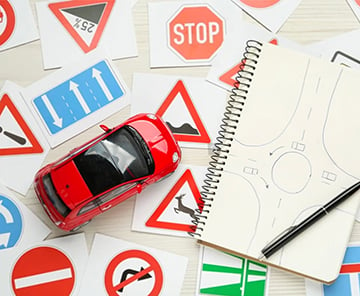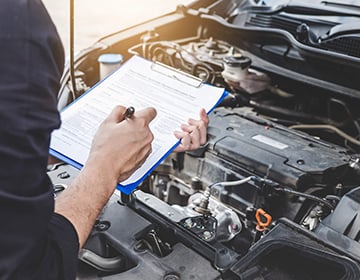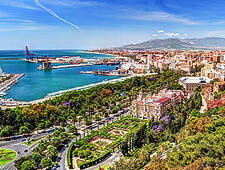You will need a valid driving license, as a first, and the appropriate documentation for your vehicle if you plan to drive in Spain. In this blog, you will learn everything you need to know about the driving regulations in Spain and how easy it is.
Is Driving in Spain Safe?
 Yes, of course. Once you have gotten used to driving on the right side of the road, driving in Spain is pretty simple. The toll motorways are quite peaceful, and all major routes are in good shape and well-signposted.
Yes, of course. Once you have gotten used to driving on the right side of the road, driving in Spain is pretty simple. The toll motorways are quite peaceful, and all major routes are in good shape and well-signposted.
Plus, you will have a one-of-a-kind experience if you take a road trip through this Mediterranean country with its breathtaking landscapes. Anytime you want, you can pull your car to a beach to swim or go out for a walk in the forest.
Moreover, if you have a tent, that’s perfect! You can wake up to stunning views every day in a different Spanish city. Not to mention that you can have a chance to taste the unique dishes of each city along the way.
You can make your Spain road trip as long or as short as you wish. But those with limited time usually travel to the cities in Andalusia or the Basque Country. When the richness of these regions' historical texture is mixed with their scenic beauties, the journeys become even richer.
On this kind of travel, you can enjoy the opportunity to explore Spain in depth. Check out the must-see hidden gems in Spain if you do not know where to start.
By the way, you can rent a car if you do not own one. Since many tourists in Spain drive, it is usually possible to find a good deal on a rental car.
Driving Requirements in Spain
You will need both your primary driver's license and an international driver's permit (IDP) to drive your own vehicle or self-drive in Spain. A collection of safety equipment is also necessary to help in an emergency, while it is not required to be carried at all times.
For example, if the police stop you, you will not be fined for not having safety vests, but if any passenger of the car leaves the road in an emergency without a vest, you might be. These are also the essentials you should always carry in your car;
- Driver's license and IDP
- Insurance documents
- Ownership documents or rental documents
- Passport as you are driving in Spain as a tourist
- Fluorescent jacket for all occupants
- Two warning triangles
- An extra pair of glasses, if you wear them
A fire extinguisher and a first-aid kit are the recommended items you should have with you in a car.
General Road Rules in Spain
 Spain uses the right-hand side of the road for driving. All passengers in a car's front and back seats must wear safety belts, and there are speed limits on every road. The speed limits are 120 km/h on dual carriageways and motorways, 90 km/h on all other roads, and 50 km/h in urban areas, though in many residential areas, the limit can be as low as 30 km/h depending on specific regulations. The other driving in Spain requirements and rules are as follows;
Spain uses the right-hand side of the road for driving. All passengers in a car's front and back seats must wear safety belts, and there are speed limits on every road. The speed limits are 120 km/h on dual carriageways and motorways, 90 km/h on all other roads, and 50 km/h in urban areas, though in many residential areas, the limit can be as low as 30 km/h depending on specific regulations. The other driving in Spain requirements and rules are as follows;
- In Spain, you must be at least 18 years old to drive and 21 to rent a car.
- Talking on a phone or using one while operating a vehicle is prohibited unless you have a hands-free system. The use of handheld devices and screens that are not integrated into the vehicle is not allowed while driving. However, using built-in or properly mounted navigation systems is permitted.
- Only the left side of the vehicle you want to pass can be used for overtaking.
- If you drink, do not drive. Blood alcohol levels must not exceed 0.5 g/l (0.25 mg/l in exhaled air). Spain has strict drunk driving legislation and penalties, and having a high blood alcohol level might land you in jail.
- Parking on public streets is not always allowed or cost-free. Parking lots are restricted and chargeable in many cities. These can typically be distinguished by the parking meters.
- You should not park next to a yellow line in residential neighborhoods. In that case, you will probably be towed away, especially if you are in a foreign car.
- Children must always have an approved restraint system and cannot sit in the front seat if they are less than 135 cm. It is advised to wear a backless restraint until the child is 150 cm or taller. If you want to take a baby in a taxi, you must have an approved restraint device with you because these guidelines also apply to taxis.
In Spain, you may refuel practically anywhere, but keep in mind that fuel may be labeled differently than in your home country. "Sin plomo 95" and "Sin plomo 98" refer to unleaded gasoline with octane ratings of 95 and 98, respectively, while "Gasóleo" refers to diesel. When refueling, you need to turn off the engine, radio, lights, and cell phone.
Roads Types and Speed Limits in Spain
The network is controlled and fully identifiable by a variety of codes for the different motorways, high-capacity roads, and other routes. The identifying signs will consist of a letter as a prefix, followed by numbers, and a different colored background, like NC-017.
- Green refers to the European route number, and the prefix is E. It indicates that you are on a road that is a part of the international E-road network, which is a naming system for international roads in Europe. The speed limit on these roads typically matches that of the underlying national roads, so on motorways, it is generally 120 km/h.
- Blue is for motorways. The names of toll roads in Spain begin with an AP. They are usually largely free of traffic. However, these roads have always toll-free highways running roughly alongside them, which will be busier. The speed limit is 120 km/h.
- Red is for national road networks, and its prefix is N. They are free. They might only have one or two lanes of traffic, and overtaking is not allowed. The speed limit is 90 km/h.
- Brown is used for those under the control of a regional body. Its letter is C. They are free. The speed limit is 90 km/h.
Car Registration and Maintenance in Spain
 In Spain, all cars must be registered with the Directorate-General for Traffic (Dirección General de Tráfico (DGT)). In most cases, a dealership will register your new vehicle for you if you purchase it from them. You can do it yourself online as well.
In Spain, all cars must be registered with the Directorate-General for Traffic (Dirección General de Tráfico (DGT)). In most cases, a dealership will register your new vehicle for you if you purchase it from them. You can do it yourself online as well.
You must re-register your vehicle if you intend to import it into Spain. You will also need to show a certificate, such as an EU Certificate of Conformity, proving that the vehicle complies with basic road regulations in Spain. The vehicle is required to be inspected at a licensed vehicle inspection (Inspección Técnica de Vehiculos - ITV) station.
Usually, there are additional import taxes for vehicles coming from outside the EU. Following car registration, you will receive a registration number and be able to get Spanish license plates. If you want to drive an imported vehicle in Spain before the registration procedure is finished, you will be given temporary green license plates.
In Spain, ITV maintenance inspections are required for all cars once they reach the age of four and then every two years until they reach the age of ten. After that, inspections take place every year.
New Era Driving in Spain: Low Emission Zone
Low-emission zone in Spain ((LEZs) means places that have been controlled by an administration where parking and access for specific cars are banned based on their emissions. The aim is to improve air quality.
150 localities across the country are forced to implement the regulations by 2023, including Andalucia, Valencian Community, Region of Murcia, and so on. To find out if your car complies with the rules, you obtain a DGT emission sticker from a local gestoría or online via the Correos website, but the easiest method is probably at Correos offices.
The DGT's environmental label is 5 €. Delivery fees may be extra. Click on the related news to learn more about Spain's carbon emissions regulations.
FAQ about Driving a Car in Spain
The most frequently asked questions and answers on the subject are as follows:
Q: Do I need an international driving license in Spain?
A: Yes. You must use together a valid driving license issued in your home country.
Q: What is the international driving permit in Spain?
A: It is a translation of your national driver's license. You can drive vehicles abroad thanks to the IDP. Both your national license and your IDP must be carried at all times.
Q: Can I drive in Spain with an international driving permit?
A: Yes you can.
Q: Is it safe to drive in Spain?
A: Yes. All you need to have is a car and a map to figure out the roads.
Q: Is it difficult to drive in Spain?
A: No. The toll motorways are quite peaceful, and all major routes are in good shape and well-signposted.
Q: What side of the road do they drive in Spain?
A: On the right side.
Q: Can I drive in Spain with a UK license after Brexit?
A: You can drive in Spain with a UK license for short visits (under 6 months).
* If you have been in Spain for more than six months and have not switched your UK license to a Spanish one, you are not permitted to drive after May 1, 2022.
Click here to learn more about UK licenses in Spain.
Q: What is the driving age in Spain?
A: To receive a driver's license, you must be at least 16 years old for motorcycles, 18 years old for cars, and 21 years old for buses and cargo trucks.
Q: Can I drive a rental car in Spain as a tourist?
A: To rent a car in Spain, you must be at least 21 years old and have a valid driver's license from your home country, a credit card, and an international permit. Additionally, you must have a printed copy of the confirmation or voucher on hand.
Q: I got a traffic ticket/fine in Spain. How can I pay?
A: The Guardia Civil has the right to demand that you pay your fine right away as a tourist if you do not have a permanent address in Spain. They have the right to impound the car if you do not pay right away. So, it makes sense to pay immediately, especially since there is a 20 percent discount for doing so. Make sure to get a receipt, particularly if you believe the police officer was unfair.
Q: What can I do in an emergency in Spain?
A: Anywhere in Europe, you can call 112 to reach local emergency services. Along Spain's motorways, there are also emergency phones connected to the emergency network approximately every mile.
You can look at the source of driving laws in Spain here.




